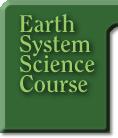Week
2: Yellowstone Event to Sphere Interactions
The examples
below address sphere > event and event > sphere
interactions. When doing ESS analyses in the future, you can
include your event > sphere and sphere > event
interactions under one heading called “Event to Sphere
Interactions”.
Event and
Atmosphere
E > A
The
forest fires could cause acid rain. As with industrial
pollution, CO2
from the fire would combine with the moisture in
the atmosphere to form carbonic acid, or H2CO3.
E > A
Intense
fires create their own upward air movement. Forest fires
make "updrafts" of air like the warmth you can
feel if you hold
your hand about 12 inches above a candle flame.
E > A
> E
The
intense fires created their own upward air movement,
increasing the wind velocity and drawing in oxygen at the
base of the flames to continue to feed the fire.
A > E
I heard
that lightning is a common cause of forest fires. This
makes sense to me
because the high temperature of a lightning
bolt combined with the dry biomass often found in Yellowstone
is a recipe for a forest fire.
Event and
Hydrosphere
E > H
Burning
pine needles, wood, and other plant material can produce
an ash that may come down in nearby streams and change
(either up or down) the pH of water.
H > E
Precipitation
can naturally extinguish wildland fires. On September
11, 1988, two inches of wet snow covered a large portion
of Yellowstone National Park. The snow put out some of
the flames and prevented the fire from spreading.
http://www.wildrockies.org/Fires-of-88/history.html
Event and
Biosphere
E > B
Removal
of leaf litter and other debris, as well as plant competitors
such as non-natives, makes it easier for native plants
and pioneer plants (fireweed, lodgepole pine, etc.) to
germinate.
E > B
Forest
fires are sometimes needed in the life cycle of some living
things. For example, some pinecones, like the lodgepole
pinecones, need the heat of a fire to open them and
release their seeds.
E > B
Animals
that couldn't flee the flames were killed. Even those who
could flee had trouble surviving after the fire because
their habitat was
severely altered.
B > E
Future
fires will be less likely to occur after all the fuel (biomass)
in an area has been combusted. For instance, when
the plant litter on the ground is burned off, there is no
more fuel for a new
fire. And we know that a fire needs fuel. This
makes sense to me because I read that leaf litter and other
"burnables," which had collected on the Yellowstone
forest floor since
the previous fire 75 years ago, provided the fuel
for the 1988 fire.
Event and
Lithosphere
E > L
Intense
heat from the fires may have caused some rocks to break
apart as I have seen happen in campfires.
E > L
Heat
from the fires can affect the topsoil. As an illustration,
the fires
baked out a lot of the living, nutrient-rich organic matter,
called humus.
In the future, as
you list event > sphere, sphere > event, and sphere >
sphere interactions, as well as causal chains, it is important
that you be able to explain why or how the interactions occur.
For example, the E > A interaction above doesn’t merely
state, “The forest fires could cause acid rain.” It gives
the reason, "As with industrial pollution, CO2
from the
fire would combine with the moisture in the atmosphere to form
carbonic acid, or H2CO3.” Such explanations display your
understanding of the science behind the interactions. These
explanations are valuable for you and others because they make
your "Why?" or "How?" thinking visible,
and they often lead you to think of additional ESS
interactions.
[ Back
to The Integration of the ESS Analysis
and the PBL Model ]
[ Go to Yellowstone
Sphere to Sphere Interactions ]
[ Go to Yellowstone
Causal Chains ]
[
Back
to Outline ]
[
Home ] [ Intro
] [ Guide ] Outline [ Classroom
]
HTML code
by Chris Kreger
Maintained by ESSC Team
Last updated July 27, 2000
Privacy
Statement and Copyright©
1997-2000 by Wheeling Jesuit University/NASA Classroom of the Future™. All
rights reserved.
|



